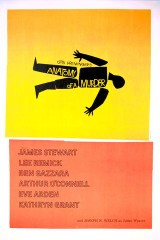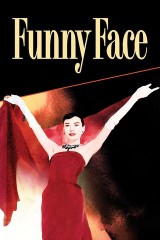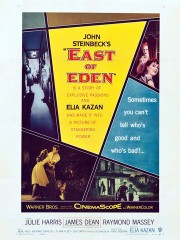
(Photo by Getty Images / Frazer Harrison)
It’s Halloween time, and some might expect Mr. Freddy Krueger himself, Robert Englund, to rattle off some gruesome examples of blood-tastic horror when asked about his favorite films. And though he is promoting the slaughter-fest horror comedy (horredy?), The Funhouse Massacre, which opens Nov. 13, Englund delivered real shock with a list of film classics that helped to groom an impressionable young man into the actor known today as one of horror’s most notable icons.
With the Nightmare on Elm Street franchise under his belt, Englund has also starred in and made cameos in such other horror/sci-fi fan faves as Strangeland, Fear Clinic, The Last Showing, Never Too Young to Die, The Phantom of the Opera (1989), Wishmaster, Dead and Buried, and Urban Legend. Here is his list of five non-horror favorites:
Bernardo Bertolucci’s 1900 is one of my favorites. It’s epic — when I saw it at a film festival, they literally had an intermission where they served pasta and red wine. It was wonderful. It’s a thin, handsome Gérard Depardieu in the prime of his youth, and Robert De Niro doing a great aging character, the rich boy. Depardieu [as] the poor boy. Probably one of the greatest entrances in the history of cinema for the beautiful actress Dominique Sanda. And Bertolucci uses this town, this little village — and you see it go from the turn of the century to WWII, and it changes with the seasons, and the time. And one of the best villains ever, Donald Sutherland, as this sort of grand guignol, a fascista, brown shirt — you know, black shirt — that is corrupted by the Mussolini movement in Italy. And he just completely surprises you with his performance. It’s really wonderful and kinky, and strange and beautiful. And the music is extraordinary. Yeah, it’s really a great film — a long movie, but a great movie — and it really left an indelible stamp on my brain. All these movies in my top five are what I call “desert island” movies. These are films that I can see again and again, and they have sequences or images in them, or they’ve left such a film memory in my imagination — such a stamp on my memory and imagination — that I can see them again and again.

My number two movie is Otto Preminger’s Anatomy of Murder starring Jimmy Stewart — one of my favorite James Stewart performances. He’s the country lawyer, so all those folksy tricks that Jimmy Stewart uses just really come into play here– ’cause he’s also so bright, you know? He’s the brilliant, folksy country lawyer. And Lee Remick is in it, in the flower of her youth. Bra-less and in Ray-Bans — you know, who doesn’t want [to see] that? And gosh, Ben Gazzara in a really neurotic, strange performance. I think it’s the screen debut of George C. Scott as the young lawyer from Lansing, MI, who takes on this case; and he’s — it’s just brilliant courtroom stuff. Murray Hamilton — who plays the mayor in Steven Spielberg’s Jaws — he’s the bartender, and he’s wonderful; it’s a great turn. And the music: Duke Ellington and Ella Fitzgerald, so it’s a great jazz score. The Jimmy Stewart character tinkles on the ivories and he plays a little bit of jazz sometimes as a kind of hobby, so that justifies the score. But that’s a great film — black and white, beautifully shot, underrated. Almost a perfect film.
And my third favorite is Steven Spielberg’s Close Encounters of the Third Kind. And I prefer the kind of dark cut — where the family is a little bit more “damned.” Richard Dreyfuss’ family — they’re a little bit more nagging, and it’s almost like they’re stepping on his dream and vision. They sort of become representative of a kind of bourgeois middle class America that doesn’t have any imagination and perhaps is even a little bit materialistic. It’s great. And in this one, I think it’s hinted that Dreyfuss and Melinda Dillon do get together. I just love it. I love Close Encounters –– it’s magical.
RT: Do you find that the cut you’re referencing is a much different experience then?
I just don’t know, Kerr, if it’s the director’s cut or if there was a bootleg dark cut, or if there was a release of another cut that had maybe been the director’s cut— but it’s just a little darker. There comes a point where — I remember the first time I saw it — you kind of think Richard Dreyfuss is crazy, and embarrassing his family a little bit. And you kind of go down that road. But in the other one I saw, we know what he’s gone through and we sort of want to champion him a little more. We don’t think he’s going crazy as we think he’s had a vision. And that the family is holding him back a little more. Also, I think the military is indicted a little more in that one, too. But I’m not sure if it’s the director’s cut. I mean, I’m hoping that it is, but I’m not sure. I’ve worked several times with Tobe Hooper, and Tobe directed Poltergeist. Everybody called it a Spielberg movie, but you know it’s a Tobe movie because he’s got marijuana smoking parents in it. Jo Beth Williams and Craig T. Nelson — they’re smoking dope in bed, and nobody had ever done that before in the history of movies, and they’re a middle class family. So you know, that’s obviously Spielberg opening his heart and his mind to that interpretation. Spielberg could do that. Spielberg does have that dark side, but he doesn’t always show it. Anyway, I love Close Encounters, and I can see it again and again. There’s just magical, magical stuff in it.

My fourth favorite movie — I think every top five list has to have an Audrey Hepburn movie in it. Probably the greatest face of the 20th century, if not Sophia Loren and perhaps Monroe. Maybe Ingrid Bergman. But certainly she changed everything for the waif look, and the modern woman, and the non-buxom bosomy girl; and also always played smart. But this movie — I know I sound like a chorus boy here but, Funny Face is just… the choreography, the split-screen work, Kay Thompson, my God. Just try to stare at Audrey Hepburn dancing in her wedding attire and stepping onto a raft into an idyllic French stream with swans floating around. And perfect choreography and synchronization with the camera. And the swooping crane shots and the music. It’s just a wonderful, wonderful film. And smart and funny — and beatniks in Paris, and fashion, and color, and, yeah, I just really love the film. Ahead of it’s time.

I also love Elia Kazan and it was a toss up for me between On the Waterfront, which I saw as a child, and East of Eden, which I saw as a young kid, and also rediscovered as an adult. But I do remember more recently a beautiful print that was struck — maybe by UCLA archives, maybe by AFI; I’m not sure who — and they had a screening of it at a theater that’s the longer one there in Century City, beautiful theater. At one time I think it was the state of the art theater in the country, with the first reclining seats and all that. They had [screened it] somehow, in conjunction with the LA city school system and the English department of LA city schools. And I believe that the matinee that I saw was predominantly schools… And the kids have to read East of Eden or Steinbeck, Travels with Charley or something in school, and you could tell this was going to be their Steinbeck assignment, so it was a field trip. But this… wasn’t a movie for young people, and I was a little worried that the noise, the kicking of the seats, and the high jinx that were prevailing in the auditorium before the lights went down would keep going. And I remember about five minutes into the film there’s a shot of James Dean hopping a freight — he jumps this train, near Monterey and he goes to Salinas, or vice versa — he hops the train and is on his way to Monterey to visit his mother, to find his mother in a brothel. And it’s cold, it’s evening — he pulls his little sweater over his head like a hoodie and he bundles up almost in a fetal position on the top of this train, snaking it’s way through the country side in Monterey county. And the entire audience shut up and you could hear a pin drop.
It was the power of a true movie star. It was the first American teenager, James Dean, on the screen. And it didn’t matter that it was a predominantly… junior high school to high school kids — they got it. They got his angst, they got his beauty, they got his rebellion, all in literally 30 seconds’ worth of him exuding teen angst in the film and it was just this great moment. It reminded me of the power of stardom, of light and shadow on the screen, of a Greta Garbo, of a great screen kiss between — God rest her soul — the late Maureen O’Hara and John Wayne in The Quiet Man, or John Travolta strutting down the sidewalk in Saturday Night Fever— it’s just this great thing. And I love that movie anyway. There’s sequences and scenes in that movie, and James Dean, his grace in that movie — I think his movement in that movie is only matched by one or two Lee Marvin performances, and maybe one or two Sean Connery performances that I’ve seen in terms of just male physical grace. Really a great film, and I had to put Kazan on my list. So Kazan would be my number five for East of Eden starring James Dean.
Kerr Lordygan for Rotten Tomatoes: The Funhouse Massacre is really good fun.
Robert Englund: I haven’t seen all of The Funhouse Massacre. I’ve only seen my scenes because I had to do some dubbing on them — the beginning. It was tricky for me because the script of Funhouse Massacre was this great pun, this great manipulation of, you know, the funhouse, grindhouse horror — and then mashed up with this, “What if the real guys in a haunted Halloween house were replaced with the real guys?” Really over the top. But I think it’s Jere Burns — wonderful actor, I think it’s really going to be his movie. I’m more of an extended cameo actually, but yeah, [special makeup effects supervisor] Robert Kurtzman told me it’s a lot of fun. So I hope you have a good time with it.
The Funhouse Massacre opens Friday, Nov. 13 in limited release.
En español: Read this article in Spanish at Tomatazos.com.